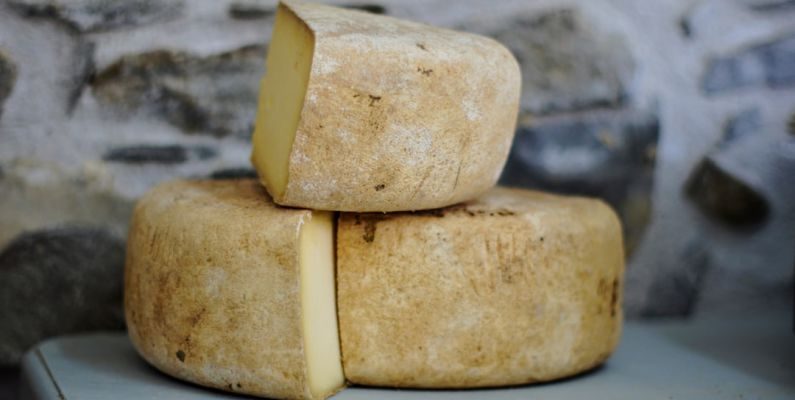Sushi, a culinary art form that has captivated taste buds around the world, has its origins deeply rooted in Japan. The meticulous preparation and presentation of sushi are not just about creating a delicious meal but also about honoring tradition and showcasing the skill of the chef. In Japan, sushi making is considered a revered craft that requires years of training and dedication to master. Let's delve into the world of sushi making in Japan and uncover the secrets behind this exquisite cuisine.
**The Essence of Sushi Making**
At the heart of sushi making lies the concept of "shari" and "neta." Shari refers to the vinegared rice, which serves as the base of the sushi. Neta, on the other hand, refers to the topping placed on the rice, which can include raw fish, seafood, or vegetables. The balance between the shari and neta is crucial in creating the perfect piece of sushi. Chefs pay meticulous attention to the quality of the ingredients, the temperature of the rice, and the seasoning to ensure that each bite is a harmonious blend of flavors and textures.
**The Role of the Chef**
In Japan, sushi chefs, known as "itamae," undergo rigorous training that can last for many years before they are considered masters of their craft. The training involves learning not only how to prepare the rice and toppings but also the art of knife skills, fish butchery, and presentation. Itamae are expected to have a deep understanding of the ingredients they work with, including where they come from, how they are best prepared, and how they can be paired to create a symphony of flavors. The precision and discipline required of sushi chefs are what set them apart and elevate sushi making to an art form.
**The Ritual of Sushi Making**
Sushi making in Japan is not just about the end product but also about the process itself. Each step, from washing the rice to slicing the fish, is performed with precision and care. The act of forming the rice into bite-sized pieces and delicately placing the neta on top is a ritual that symbolizes respect for the ingredients and the diners who will enjoy the sushi. The focus on mindfulness and attention to detail is what elevates sushi making to a meditative practice that honors tradition and craftsmanship.
**The Importance of Tradition**
Tradition plays a significant role in sushi making in Japan. The techniques and recipes passed down from generation to generation form the foundation of this culinary art. Itamae not only learn how to make sushi but also the history and cultural significance behind each piece they create. The emphasis on tradition ensures that the art of sushi making remains authentic and respects the legacy of those who came before. By adhering to tradition, sushi chefs preserve the integrity of the craft and continue to uphold its reputation as a symbol of Japanese gastronomy.
**Honoring the Seasons**
In Japan, sushi making is deeply connected to the changing seasons. Itamae pay close attention to seasonal ingredients and flavors, incorporating them into their sushi to highlight the best that nature has to offer. From cherry blossom season in spring to the rich flavors of autumn, sushi chefs create menus that reflect the bounty of each season. By honoring the seasons in their sushi making, chefs not only showcase their creativity but also pay homage to the natural world and the rhythm of life.
**A Journey of Mastery**
The art of sushi making in Japan is a journey of mastery that requires dedication, discipline, and a deep respect for tradition. Itamae spend years honing their skills, learning from experienced chefs, and perfecting their techniques to create sushi that is not just a meal but a work of art. The meticulous attention to detail, the focus on quality ingredients, and the reverence for tradition are what make sushi making in Japan a revered craft that continues to captivate diners around the world.
In conclusion, sushi making in Japan is not just about creating a delicious meal but also about honoring tradition, showcasing skill, and paying homage to the natural world. The art of sushi making is a meditative practice that requires precision, discipline, and a deep understanding of ingredients. Itamae, through their dedication and mastery, continue to elevate sushi making to a culinary art form that celebrates the beauty of Japanese gastronomy.
Global Cuisine
Tapas have become a beloved culinary tradition that has spread far beyond the borders of Spain. These small, flavorful dishes are perfect for sharing with friends and family, accompanied by a glass of wine or a refreshing beer. To truly enjoy tapas like a Spaniard, there are a few key tips and tricks to keep in mind.
Understanding the Tapas Culture
Tapas are not just a type of food in Spain; they represent a way of life. Spaniards often gather at bars and restaurants in the early evening to enjoy a few tapas before dinner. This social activity, known as "tapeo," is a time to relax, socialize, and savor the flavors of these small dishes. Embracing the tapas culture means taking your time, enjoying the company of others, and savoring each bite.Ordering Tapas
When it comes to ordering tapas, there are a few guidelines to follow. Firstly, don't be afraid to ask for recommendations from the staff. They are usually well-versed in the menu and can point you towards their most popular or delicious dishes. Secondly, try to order a variety of tapas to share with your group. This allows everyone to taste a bit of everything and experience the diverse flavors that Spanish cuisine has to offer.Eating Tapas
One of the joys of tapas is the communal aspect of sharing small plates with others. Spaniards often order several dishes and place them in the center of the table for everyone to enjoy. When eating tapas, use a small plate or napkin to place your finished toothpicks or bones. This not only keeps the table clean but also serves as a visual cue for the server to see what you have already eaten.Pairing Tapas with Drinks
In Spain, tapas are typically enjoyed with a drink, whether it's a glass of wine, a beer, or a refreshing sangria. When pairing tapas with drinks, consider the flavors of the dishes. For seafood tapas, a crisp white wine or a light beer can be the perfect complement. For meatier dishes, a bold red wine or a Spanish vermouth might be more suitable. Experiment with different pairings to find what works best for your palate.Embracing the Relaxed Atmosphere
Part of enjoying tapas like a Spaniard is embracing the relaxed and sociable atmosphere of a tapas bar. Take your time savoring each dish, engage in conversation with your companions, and soak in the lively ambiance of the bar. Don't rush through your meal; instead, linger over each bite and enjoy the experience of trying new flavors and dishes.Exploring Different Tapas
One of the best parts of enjoying tapas is the opportunity to sample a wide variety of dishes in one sitting. From classic favorites like patatas bravas and jamón ibérico to more adventurous options like octopus or anchovies, there is a tapa for every palate. Be open to trying new flavors and textures, and don't be afraid to step out of your comfort zone. You may discover a new favorite dish that you wouldn't have otherwise tried.Savoring the Moment
As you indulge in the world of tapas, remember to savor each moment and appreciate the simple pleasures of good food, good company, and good drinks. Whether you're dining in a bustling tapas bar in Barcelona or recreating the experience at home, tapas are meant to be enjoyed leisurely and with gusto. So raise a glass, take a bite, and immerse yourself in the vibrant and delicious world of Spanish tapas. In conclusion: In conclusion, to truly enjoy tapas like a Spaniard, embrace the social aspect of sharing small plates, be adventurous in your food choices, and savor each bite with a drink in hand. Whether you're a seasoned tapas aficionado or a newcomer to this culinary tradition, following these tips will help you make the most of your tapas experience. So gather your friends, head to a local tapas bar, and enjoy the flavors and camaraderie that tapas have to offer. Cheers to a delightful tapeo!
Imagine a world where the air is filled with the sweet scents of rose water and orange blossom, where every bite is a burst of flavors that dance on your taste buds. Welcome to the enchanting world of Turkish delights, a confectionery that has captured the hearts and palates of people around the globe.
A Sweet Symphony of Flavors
Turkish delights, also known as Lokum, are a traditional Turkish treat that dates back centuries. These delightful morsels are made from a mixture of starch, sugar, and a variety of flavorings such as rosewater, lemon, orange blossom, or nuts. The result is a chewy, gel-like candy that is coated in powdered sugar, making each bite a sweet and indulgent experience. The flavors of Turkish delights are as diverse as the country itself, with each region offering its unique twist on this beloved treat. From the floral notes of rosewater to the citrusy zing of lemon, each flavor profile is a reflection of the rich cultural tapestry of Turkey.A Journey Through Turkish Delights
Istanbul, the bustling metropolis that straddles Europe and Asia, is a treasure trove of Turkish delights. The vibrant markets, known as bazaars, are filled with stalls selling an array of lokum in every color and flavor imaginable. As you stroll through the bazaars, the scent of spices mingles with the sweet aromas of Turkish delights, creating a sensory experience like no other. One of the most popular variations of Turkish delights is the pistachio lokum, where crunchy pistachios are nestled in a bed of soft, sugary goodness. The nutty flavor of the pistachios pairs perfectly with the sweetness of the candy, creating a harmonious blend of textures and tastes. For those who prefer a more floral experience, the rosewater lokum is a must-try. The delicate aroma of rosewater is infused into the candy, creating a fragrant and refreshing treat that is perfect for indulging in on a hot summer day.A Culinary Delight
Turkish delights are not just a treat for the palate; they are also a feast for the eyes. The vibrant colors and intricate designs of these confections make them a visually stunning addition to any dessert table. From bright pink rosewater lokum to golden saffron-infused delights, each piece is a work of art in its own right. In Turkey, lokum is not just a sweet treat; it is a symbol of hospitality and generosity. It is customary to offer guests a small plate of Turkish delights alongside a cup of steaming Turkish coffee as a gesture of welcome and friendship. The act of sharing these delectable treats is a cherished tradition that has been passed down through generations.The Perfect Pairing
Turkish delights are not only delicious on their own but also make the perfect accompaniment to a variety of dishes and beverages. Pair a plate of citrusy lemon lokum with a cup of fragrant Turkish tea for a refreshing afternoon pick-me-up. Or savor the rich flavors of a pistachio lokum alongside a glass of sweet Turkish wine for a decadent dessert experience.In Conclusion: Indulge in the Delights of Turkey
In conclusion, Turkish delights are more than just a candy; they are a culinary experience that transports you to the vibrant streets of Turkey with every bite. Whether you prefer the floral notes of rosewater or the nutty crunch of pistachios, there is a lokum flavor for everyone to enjoy. So, take a culinary journey through the aromas and tastes of Turkish delights and savor the sweet symphony of flavors that this beloved treat has to offer.
Thailand is a country known for its vibrant culture, stunning landscapes, and most notably, its mouth-watering street food. Thai street food is more than just a quick meal on-the-go; it's an experience that immerses you in the local flavors and traditions of this Southeast Asian nation. From bustling markets to humble roadside stalls, the essence of Thai street food lies in its diversity, bold flavors, and the passion of the people who create it.
A Culinary Symphony of Flavors
Walking down the streets of Thailand, you'll be greeted by a symphony of aromas that range from sweet and spicy to tangy and savory. Thai street food is a celebration of flavors, combining fresh herbs, aromatic spices, and a harmonious balance of sweet, sour, salty, and spicy tastes. Each dish tells a story of centuries-old culinary traditions passed down through generations, creating a rich tapestry of flavors that is uniquely Thai.The Thai Street Food Scene
The bustling street food scene in Thailand is a sensory overload, with vendors skillfully preparing a wide array of dishes right before your eyes. Whether you're craving a steaming bowl of fragrant Tom Yum soup, a crispy Pad Thai noodle stir-fry, or a spicy Som Tum papaya salad, you'll find it all and more on the bustling streets of Thailand. From morning until night, street food vendors dish out an endless variety of dishes, catering to every palate and budget.Must-Try Street Food Delights
One of the most iconic dishes in Thai cuisine is Pad Thai, a flavorful stir-fried noodle dish that combines chewy rice noodles with eggs, tofu, shrimp, and an irresistible sweet and tangy sauce. Another must-try is the fiery Som Tum salad, made with shredded green papaya, cherry tomatoes, peanuts, and a zesty dressing of lime juice, fish sauce, and chili. For those seeking a comforting bowl of soup, Tom Yum Kung is a popular choice, featuring a spicy and sour broth infused with lemongrass, galangal, and fresh herbs.Exploring Thai Street Food Markets
Thai street food markets are a treasure trove of culinary delights, where you can sample a wide variety of dishes in one bustling location. From the vibrant colors of fresh fruit smoothies to the sizzle of meat skewers on the grill, Thai markets offer a feast for the senses. Chatuchak Weekend Market in Bangkok is a must-visit for food enthusiasts, with hundreds of stalls offering everything from grilled meats and seafood to traditional desserts and exotic fruits.The Heart of Thai Street Food: The People
At the heart of Thai street food are the passionate vendors who dedicate their lives to perfecting their craft and sharing their love of food with others. These culinary artisans take pride in creating dishes that not only taste delicious but also reflect the rich cultural heritage of Thailand. Whether it's a humble noodle soup stall or a family-run curry shop, the people behind Thai street food are the true heroes who keep the tradition alive.Embracing the Thai Street Food Culture
To truly experience the essence of Thai street food, one must embrace the culture of eating like a local. Whether you're sitting on a tiny plastic stool at a bustling night market or perched on a street corner with a steaming bowl of soup in hand, the key is to savor each bite and immerse yourself in the lively atmosphere around you. Thai street food is not just about the food itself; it's about the sense of community, the joy of discovery, and the shared love of good food that brings people together.In Conclusion: A Culinary Adventure Awaits
The essence of Thai street food goes beyond just the flavors and ingredients; it's a culinary adventure that invites you to explore the rich tapestry of Thai cuisine. From the vibrant markets to the humble roadside stalls, every bite tells a story of tradition, innovation, and passion. So, the next time you find yourself in Thailand, be sure to immerse yourself in the world of Thai street food and discover the magic that awaits in every dish.
Moroccan cuisine is a vibrant tapestry of flavors, colors, and aromas that reflect the country's rich history and diverse cultural influences. From the bustling markets of Marrakech to the seaside towns of Essaouira, every corner of Morocco offers a culinary adventure waiting to be explored. In this article, we will delve into the fascinating world of Moroccan cuisine, from its traditional dishes to the unique spices that give them their distinctive taste.
**The Essence of Moroccan Cuisine**
At the heart of Moroccan cuisine is the concept of communal eating, where meals are shared with family and friends, creating a sense of togetherness and hospitality. Tagines, the iconic clay cooking vessels, are central to Moroccan cooking, gently simmering ingredients to create tender and flavorful dishes.
**Spices: The Soul of Moroccan Cooking**
Moroccan cuisine is renowned for its intricate blend of spices that add depth and complexity to dishes. Cumin, coriander, cinnamon, paprika, and saffron are just a few of the essential spices used in Moroccan cooking. These spices not only enhance the flavor of dishes but also provide numerous health benefits, making Moroccan cuisine not only delicious but also nutritious.
**Sweet and Savory: The Moroccan Palate**
Moroccan cuisine is a delightful interplay of sweet and savory flavors that tantalize the taste buds. Dishes like couscous with caramelized onions and raisins, or tagine with prunes and almonds, showcase the unique balance of flavors that Moroccan cuisine is known for. Desserts like baklava and pastilla, with their delicate layers of phyllo dough and sweet fillings, are a testament to the Moroccan love for intricate and decadent treats.
**The Culinary Regions of Morocco**
Each region of Morocco has its own culinary specialties, influenced by local ingredients and traditions. In the north, dishes like pastilla and harira are popular, while in the south, tagines with preserved lemons and olives reign supreme. Coastal towns like Essaouira offer a bounty of fresh seafood dishes, while the Atlas Mountains are known for hearty tagines made with lamb or goat.
**Tea Time: The Moroccan Ritual**
No exploration of Moroccan cuisine would be complete without mentioning the beloved tradition of tea drinking. Mint tea, or "atay," is an integral part of Moroccan culture, symbolizing hospitality and friendship. The ritual of preparing and serving tea is an art form in itself, with the tea poured from a height to create a frothy layer on top. Sipping mint tea in a bustling souk or a tranquil riad is a quintessential Moroccan experience not to be missed.
**Unveiling the Secrets of Moroccan Spices**
Moroccan cuisine owes much of its distinctive flavor profile to the array of spices used in cooking. Ras el hanout, a complex spice blend that can contain up to 30 different spices, is a staple in Moroccan kitchens. This fragrant blend adds a depth of flavor to tagines, couscous, and grilled meats. Preserved lemons, another key ingredient in Moroccan cuisine, provide a tangy and citrusy note to savory dishes, balancing the richness of meats and stews.
**Embracing the Flavors of Morocco**
Exploring the flavors of Moroccan cuisine is a sensory journey that reveals the country's history, culture, and traditions. From the bustling markets of Marrakech to the serene landscapes of the Sahara, every bite of Moroccan food tells a story of resilience, creativity, and hospitality. Whether savoring a steaming bowl of harira, a fragrant tagine, or a sweet almond pastry, each dish is a celebration of the vibrant and diverse flavors that make Moroccan cuisine truly unforgettable.
**In Pursuit of Moroccan Culinary Delights**
Embark on a culinary adventure through the enchanting flavors of Moroccan cuisine, where every dish is a testament to the country's rich heritage and cultural tapestry. From the aromatic spices to the savory tagines and sweet pastries, Moroccan cuisine is a feast for the senses that will leave you craving more. So, grab a mint tea, savor a bite of couscous, and immerse yourself in the culinary delights of Morocco – a journey that promises to delight and inspire your taste buds.
The Flavorful Origins of Cajun and Creole Cuisine
Cajun and Creole cuisine are two distinct culinary styles rooted in Louisiana's rich history, blending influences from French, Spanish, African, and Native American cultures. These vibrant cooking traditions have captivated food enthusiasts worldwide with their bold flavors and unique ingredients, showcasing the diversity and heritage of the region.The Cajun Influence
Cajun cuisine originates from the Acadian people, French-speaking settlers who were expelled from Canada by the British in the 18th century. These resilient individuals settled in the bayous and prairies of Louisiana, adapting their traditional French cooking techniques to local ingredients. Cajun cuisine is known for its rustic simplicity, hearty dishes, and generous use of aromatic spices like cayenne pepper, paprika, and garlic.Gumbo: A Cajun Staple
One of the most iconic dishes in Cajun cuisine is gumbo, a flavorful stew that reflects the diverse cultural influences of the region. Gumbo typically includes a combination of protein such as chicken, sausage, or seafood, along with the "holy trinity" of Cajun cooking - onions, bell peppers, and celery. The dish is thickened with a roux, a mixture of flour and fat, and seasoned with a blend of herbs and spices. Gumbo is often served over rice, creating a comforting and soul-satisfying meal.Jambalaya: A Hearty Delight
Another beloved Cajun dish is jambalaya, a one-pot rice dish that combines meat, vegetables, and seasonings into a flavorful medley. Jambalaya can feature a variety of proteins, including chicken, sausage, shrimp, and ham, creating a hearty and satisfying meal. The dish is seasoned with a blend of spices like cayenne pepper, thyme, and bay leaves, infusing it with a rich and complex flavor profile that is sure to tantalize the taste buds.The Creole Influence
In contrast to Cajun cuisine, Creole cuisine developed in the urban centers of New Orleans, blending European, African, and Native American culinary traditions. Creole cuisine is characterized by its sophisticated flavors, refined techniques, and emphasis on fresh, local ingredients. Creole dishes often feature a combination of French, Spanish, and African influences, creating a dynamic and diverse culinary tapestry.Crawfish Étouffée: A Creole Classic
One of the signature dishes of Creole cuisine is crawfish étouffée, a rich and savory stew made with crawfish tails, vegetables, and a flavorful roux. The dish is seasoned with a blend of herbs and spices, including bay leaves, thyme, and cayenne pepper, creating a depth of flavor that is both comforting and complex. Crawfish étouffée is typically served over rice, allowing the flavors to meld together into a harmonious and satisfying dish.Beignets: A Sweet Indulgence
No discussion of Creole cuisine would be complete without mentioning beignets, delightful fried pastries dusted with powdered sugar. These light and fluffy treats are a beloved staple in New Orleans, enjoyed as a breakfast pastry or a sweet snack throughout the day. Beignets are best enjoyed fresh and hot, with a cup of café au lait, embodying the essence of Creole indulgence and hospitality.Exploring the Culinary Heritage of Louisiana
Cajun and Creole cuisine are more than just food - they are a celebration of Louisiana's diverse cultural heritage and culinary ingenuity. By tracing the roots of these vibrant cooking traditions, we gain a deeper understanding of the people, flavors, and histories that have shaped this unique corner of the world. Whether savoring a bowl of gumbo or indulging in a plate of beignets, experiencing Cajun and Creole cuisine is a journey through time and taste that is sure to leave a lasting impression.
In recent years, there has been a significant shift towards plant-based cuisines on a global scale. This shift is not just a passing trend but a fundamental change in the way people perceive and consume food. Plant-based diets are gaining popularity due to their numerous health benefits, environmental impact, and ethical considerations. Let's explore the rise of plant-based cuisines and how they are making their mark on the culinary world.
**The Health Factor**
One of the main driving forces behind the rise of plant-based cuisines is the growing awareness of the health benefits associated with a plant-based diet. Research has shown that a diet rich in fruits, vegetables, whole grains, and legumes can help reduce the risk of chronic diseases such as heart disease, diabetes, and certain types of cancer. Plant-based diets are also lower in saturated fats and cholesterol, making them a healthier option for many people.
**Environmental Impact**
Another reason for the increasing popularity of plant-based cuisines is the growing concern over the environmental impact of animal agriculture. The meat and dairy industry are significant contributors to greenhouse gas emissions, deforestation, and water pollution. By choosing plant-based options, individuals can significantly reduce their carbon footprint and help mitigate the effects of climate change. This shift towards plant-based eating is seen as a more sustainable and environmentally friendly choice for both individuals and the planet.
**Culinary Innovation**
Plant-based cuisines have come a long way from bland salads and steamed vegetables. Chefs and food entrepreneurs around the world are embracing plant-based ingredients and creating innovative and delicious dishes that appeal to a wide range of tastes. From plant-based burgers and dairy-free cheeses to vegan desserts and meat alternatives, the options for plant-based eaters are more diverse and exciting than ever before. This culinary creativity is helping to break down stereotypes about plant-based food and showcase its versatility and deliciousness.
**Global Influence**
The rise of plant-based cuisines is not limited to a specific region or culture but is a global phenomenon. Countries around the world are incorporating more plant-based options into their culinary traditions, reflecting a growing interest in healthier and more sustainable eating habits. In places like India, where vegetarianism has a long history, plant-based cuisines are deeply rooted in the culture and cuisine. In other parts of the world, such as the United States and Europe, plant-based diets are becoming increasingly mainstream, with more restaurants, supermarkets, and food companies offering plant-based options to meet the growing demand.
**The Future of Plant-Based Cuisines**
As the popularity of plant-based cuisines continues to rise, it is clear that this is more than just a passing fad. Plant-based eating is here to stay, driven by a combination of health, environmental, and ethical considerations. In the coming years, we can expect to see even more innovation and creativity in plant-based cooking, as chefs and food entrepreneurs continue to explore the possibilities of plant-based ingredients. With the growing availability of plant-based options and the increasing awareness of their benefits, plant-based cuisines are set to become a permanent fixture in the global culinary landscape.
**In Summary**
The rise of plant-based cuisines globally is a reflection of changing attitudes towards food, health, and sustainability. With a focus on health benefits, environmental impact, culinary innovation, and global influence, plant-based diets are gaining traction and reshaping the way we eat. As more people embrace plant-based eating, the future of plant-based cuisines looks bright, promising a more diverse, sustainable, and delicious culinary experience for all.
Exploring the Vineyards of France: The Ultimate Wine Tasting Experience
France, known for its exquisite wines, offers wine enthusiasts the perfect playground to indulge in the art of wine tasting. With its diverse regions, each producing unique and renowned wines, a wine tasting tour in France is an experience like no other. From the sun-kissed vineyards of Bordeaux to the picturesque landscapes of Burgundy, there is something for every wine lover to savor. Let's delve into the world of wine tasting tours in France and discover the best regions to visit for an unforgettable wine experience.The Charm of Bordeaux: A Wine Lover's Paradise
Bordeaux, often referred to as the wine capital of the world, is a must-visit destination for wine enthusiasts. With over 120,000 hectares of vineyards and more than 6,000 châteaux producing some of the finest wines in the world, Bordeaux is a paradise for wine lovers. A wine tasting tour in Bordeaux allows you to explore the historic vineyards, indulge in tastings of prestigious wines like Margaux and Saint-Émilion, and learn about the winemaking process from the experts themselves. Whether you are a seasoned wine connoisseur or a novice taster, Bordeaux offers a diverse range of experiences to suit every palate.Savoring the Flavors of Burgundy: A Journey Through Tradition
Burgundy, renowned for its elegant Pinot Noirs and complex Chardonnays, is a region steeped in tradition and history. A wine tasting tour in Burgundy takes you on a journey through picturesque villages, rolling hills, and centuries-old vineyards. Explore the famous Côte d'Or wine route, visit iconic wineries like Domaine de la Romanée-Conti, and taste some of the most sought-after wines in the world. Burgundy's terroir-driven wines reflect the unique characteristics of the region, making it a favorite destination for wine enthusiasts looking to experience the essence of French winemaking.Champagne: Sparkling Wines and Timeless Elegance
No wine tasting tour in France would be complete without a visit to the Champagne region, home to the world-famous sparkling wine that bears its name. Discover the art of champagne production, from the vineyards where the grapes are grown to the cellars where the wines are aged to perfection. Visit prestigious champagne houses like Moët & Chandon and Dom Pérignon, sip on exquisite cuvées, and learn about the intricate process of creating these effervescent delights. A champagne tasting tour in France is a celebration of luxury, elegance, and the finer things in life.Provence: Where Rosé Reigns Supreme
For lovers of rosé wine, a wine tasting tour in Provence is a must. This picturesque region in the south of France is known for its refreshing and vibrant rosé wines, which perfectly capture the essence of Provencal summers. Explore the sun-soaked vineyards, sample delicate rosés with notes of ripe berries and citrus fruits, and immerse yourself in the relaxed lifestyle of the French Riviera. Provence's laid-back charm and flavorful wines make it an ideal destination for a leisurely wine tasting tour.Unforgettable Experiences Await in the Loire Valley
The Loire Valley, often referred to as the "Garden of France," is a treasure trove of vineyards, historic châteaux, and world-class wines. A wine tasting tour in the Loire Valley offers a diverse range of experiences, from crisp Sauvignon Blancs in Sancerre to elegant Cabernet Francs in Chinon. Explore the charming towns of Tours and Angers, visit family-owned wineries, and savor the flavors of the region's signature wines. The Loire Valley's scenic beauty and rich winemaking heritage make it a captivating destination for wine enthusiasts seeking new and exciting tastes.Embark on a Wine Tasting Adventure in France
With its diverse regions, rich winemaking heritage, and unparalleled beauty, France is a dream destination for wine lovers around the world. Whether you prefer bold reds, crisp whites, or sparkling champagnes, a wine tasting tour in France offers a multitude of experiences to suit every taste. From the iconic vineyards of Bordeaux to the charming villages of Burgundy, each region has its own unique charm and flavor to discover. So pack your bags, uncork your favorite bottle, and embark on a wine tasting adventure in France that will leave you with lasting memories and a newfound appreciation for the art of winemaking. Cheers to the beauty, history, and flavors of French wine!
India is a land of vibrant colors, diverse cultures, and rich traditions. But one aspect of Indian culture that truly stands out is its culinary heritage. The spices used in Indian cuisine are not only known for their aromatic flavors but also for their medicinal properties. Embark on a flavorful journey through the spices of India and discover the magic they bring to the country's cuisine.
**A Symphony of Flavors**
Indian cuisine is a harmonious blend of various spices that come together to create a symphony of flavors. Each spice is carefully selected and combined with other ingredients to bring out the unique taste of a dish. From the fiery heat of red chili powder to the warm sweetness of cinnamon, Indian spices offer a wide range of flavors that cater to every palate.
**Turmeric: The Golden Spice**
Turmeric, also known as the golden spice, is a staple in Indian cooking. Apart from adding a vibrant color to dishes, turmeric is also known for its medicinal properties. It contains curcumin, a compound with powerful anti-inflammatory and antioxidant effects. Turmeric is widely used in Indian curries, rice dishes, and even beverages like turmeric milk.
**Cumin: The Aromatic Seed**
Cumin is another essential spice in Indian cuisine that adds a warm, earthy flavor to dishes. The aromatic seeds are roasted and ground before being added to curries, stews, and rice dishes. Cumin is also known for its digestive properties and is often used in Ayurvedic medicine to aid in digestion.
**Cardamom: The Queen of Spices**
Cardamom, often referred to as the queen of spices, is prized for its sweet and floral flavor. It is used in both sweet and savory dishes, adding a unique depth of flavor. Cardamom pods are often crushed and added to rice dishes, desserts, and even masala chai. The spice is also known for its digestive benefits and is commonly used in Indian traditional medicine.
**Cinnamon: The Sweet Spice**
Cinnamon is a versatile spice that is used in both sweet and savory dishes in Indian cuisine. It adds a warm, sweet flavor to dishes and pairs well with other spices like cardamom and cloves. Cinnamon is used in biryanis, desserts, and even savory curries, adding a touch of sweetness to the dish.
**Mustard Seeds: The Tiny Powerhouses**
Mustard seeds are tiny powerhouses of flavor that pack a punch in Indian cooking. The seeds are often tempered in hot oil to release their nutty flavor before being added to dishes. Mustard seeds are commonly used in pickles, chutneys, and vegetable dishes, adding a unique texture and taste to the dish.
**Chili Powder: The Fiery Heat**
Indian cuisine is known for its bold flavors, and red chili powder is responsible for adding the fiery heat to dishes. Made from dried red chilies, chili powder is used in marinades, curries, and spice blends like garam masala. The spice not only adds heat but also a depth of flavor to dishes, making them truly unforgettable.
**Garam Masala: The Fragrant Blend**
Garam masala is a fragrant spice blend that is used in various Indian dishes to add warmth and depth of flavor. The blend typically includes spices like cumin, coriander, cardamom, cinnamon, and cloves. Garam masala is added towards the end of cooking to retain its aromatic flavors, elevating the dish to a whole new level.
**The Culinary Magic of Indian Spices**
Indian spices are not just ingredients; they are the heart and soul of Indian cuisine. The careful selection and combination of spices create a magical symphony of flavors that tantalize the taste buds. Whether you are savoring a rich curry or indulging in a sweet dessert, the spices of India will take you on a culinary journey like no other.
Nestled in the heart of Europe, Switzerland is renowned for its picturesque landscapes, stunning alpine views, and of course, its world-class cheese. Known for its rich history of cheese-making, Switzerland offers a unique experience for cheese enthusiasts through its Cheese Trails. These trails wind their way through quaint villages, lush pastures, and traditional cheese dairies, providing a delightful journey for those eager to explore the diverse and delectable world of Swiss cheese.
**A Gastronomic Adventure**
Embarking on the Cheese Trails of Switzerland is not just a journey for the taste buds but a feast for all the senses. As you traverse the rolling hills and verdant valleys, the earthy aroma of aging cheeses fills the air, leading you to small artisanal dairies where skilled cheesemakers craft their specialties. From creamy Gruyère to tangy Emmental and nutty Appenzeller, each cheese tells a story of tradition, craftsmanship, and passion for quality.
**Meet the Makers**
One of the highlights of exploring the Cheese Trails is the opportunity to meet the makers behind Switzerland's renowned cheeses. These dedicated artisans are custodians of centuries-old techniques, passed down through generations, ensuring that each wheel of cheese is a true masterpiece. Visitors can witness firsthand the meticulous process of cheese production, from milking the cows in the early morning to the careful aging of the cheese in cool cellars. Engaging with these passionate cheesemakers offers a deeper appreciation for the artistry and dedication that goes into creating these iconic Swiss cheeses.
**Scenic Delights**
Aside from the captivating cheese-making process, the Cheese Trails also offer breathtaking views of the Swiss countryside. Picture-perfect landscapes of lush meadows dotted with grazing cows, charming chalets nestled amidst rolling hills, and the majestic Swiss Alps towering in the distance create a backdrop that is nothing short of enchanting. Whether you're a seasoned hiker or a leisurely stroller, the trails cater to all levels, promising an immersive experience in nature's beauty.
**Tasting Experiences**
No exploration of the Cheese Trails would be complete without indulging in the rich and diverse flavors of Swiss cheese. Along the way, visitors have the opportunity to sample an array of cheeses, each distinct in taste and texture. From mild and creamy to sharp and robust, Swiss cheeses cater to a wide range of palates, ensuring there is something for everyone to savor. Pair your cheese tasting with local wines, freshly baked bread, and fragrant mountain herbs for a truly authentic culinary experience.
**The Legacy of Swiss Cheese**
As you traverse the Cheese Trails of Switzerland, you become part of a legacy that dates back centuries. Swiss cheese-making traditions have stood the test of time, evolving and adapting to modern techniques while preserving the essence of artisanal craftsmanship. The Cheese Trails serve as a living testament to this heritage, inviting visitors to immerse themselves in the rich tapestry of Swiss culture, history, and gastronomy.
**In the Footsteps of Cheese Pioneers**
Walking in the footsteps of cheese pioneers, you gain a profound appreciation for the labor of love that goes into every wheel of Swiss cheese. From the rolling pastures to the aging cellars, each stage of the cheese-making process is a testament to the dedication and expertise of Swiss cheesemakers. By exploring the Cheese Trails, you not only indulge in the flavors of Switzerland but also honor the traditions and craftsmanship that have shaped the country's culinary identity.
Embarking on the Cheese Trails of Switzerland is a sensory journey that celebrates the art of cheese-making, the beauty of the Swiss countryside, and the legacy of a nation that takes pride in its culinary heritage. Whether you're a cheese aficionado or simply a lover of nature and culture, the Cheese Trails offer a unique and unforgettable experience that will leave you with a newfound appreciation for the magic of Swiss cheese.









